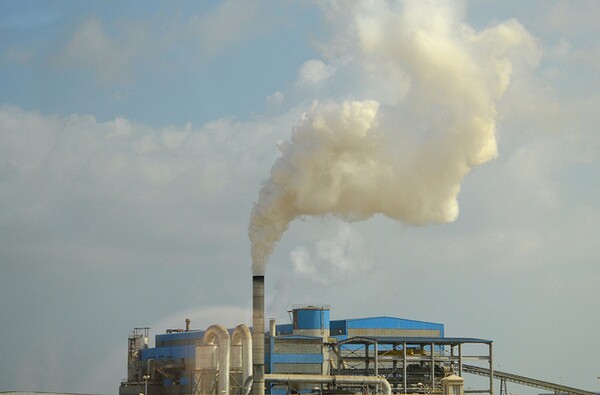California's Carbon Market a Success in its First Year, Report Finds

Despite earlier gloomy prognostications that California's greenhouse gas cap and trade system would violate the law and tank the state's economy, the program's first year has been a remarkable success. That's according to a report on the program released this week by the Environmental Defense Fund (EDF).
According to the report, entitled California Carbon Market Watch: A Comprehensive Analysis of the Golden State's Cap-and-Trade Program, Year One,, the first year of the cap and trade program's emissions credit auction coincided with a strengthening state economy and a growing renewable energy sector, while setting a stable price for the privilege of emitting greenhouse gas pollution.
According to the report, those achievements -- along with last week's link to Quebec's similar cap and trade market, and moves to do likewise with Australia and China -- show that it's possible to strictly regulate greenhouse gas emissions without plunging the world's economic activity into chaos.
"The first year results are highly encouraging and proof positive that we can successfully harness the power of the marketplace to solve climate change without sacrificing economic growth," EDF President Fred Krupp said in a press release. "In a year marked by gridlock and polarization, the Golden State is a shining example of climate leadership."
The cap and trade program's auction, administered by the California Air Resources Board (CARB), is the linchpin of the Global Warming Solutions Act (AB32), passed by the Legislature in 2006. The program, under which major polluters must obtain emissions permits ("allowances") for every ton of CO2 (or its greenhouse gas equivalent) they dump into the atmosphere, has created the second largest carbon emissions market in the world, surpassed in extent only by the European Union's program.
By 2015 the emissions credit trading system will cover 85 percent of all carbon pollution emitted by the state. That means that most of the greenhouse gases emitted in California will have a price attached to them. Not only will lowering emissions reduce the number of allowances a company must buy, but firms can sell their unused allowances to companies whose reductions haven't been as successful, offering a twinned financial incentive for polluters to cut down on their emissions.
The EDF report that the results of the five emissions credit auctions CARB has held so far show that the allowances sold so far have gone for a fairly low price, around $11 per ton of emissions. EDF suggests that this means compliance with the cap and trade program may not be as big a financial burden for companies as some business interests feared.
As the program was phased in over the last year, the polluters covered in the first round were issued a significant number of free allowances, an attempt to soften the blow of entry to the world of carbon trading. So far, the cap and trade program hasn't covered distributors of transportation fuels and natural gas: when those industries become subject to the law on January 1, 2015, doubling the scope of the program, they won't be offered free allowances.
The intent of the program, and of the Global Warming Solutions Act that established it, is to push California's greenhouse gas emissions back down to 1990 levels by 2020.
So far, the cap and trade auction proceeds have netted the state $1.37 billion for the state's Greenhouse Gas Reduction Fund, where it can be sent on projects to promote renewables and energy efficiency, clean vehicles, conservation, and waste reduction. A quarter of the projects thus funded must benefit the state's low-income communities, with 10 percent of the total required to be spent directly in those communities.
2014 will be an important year for the program. In addition to ramping up to include the transport fuel and natural gas sectors in the program in 2015, this is the year when participants must start to surrender their allowances in order to emit greenhouse gases. In other words, 2014 is when California's cap and trade program really gets going. And though it seems to ReWire that a higher price per ton of emissions would offer a better incentive to reduce those emissions, if one takes EDF at its word, it seems like things are looking up for carbon trading in the Golden State.


